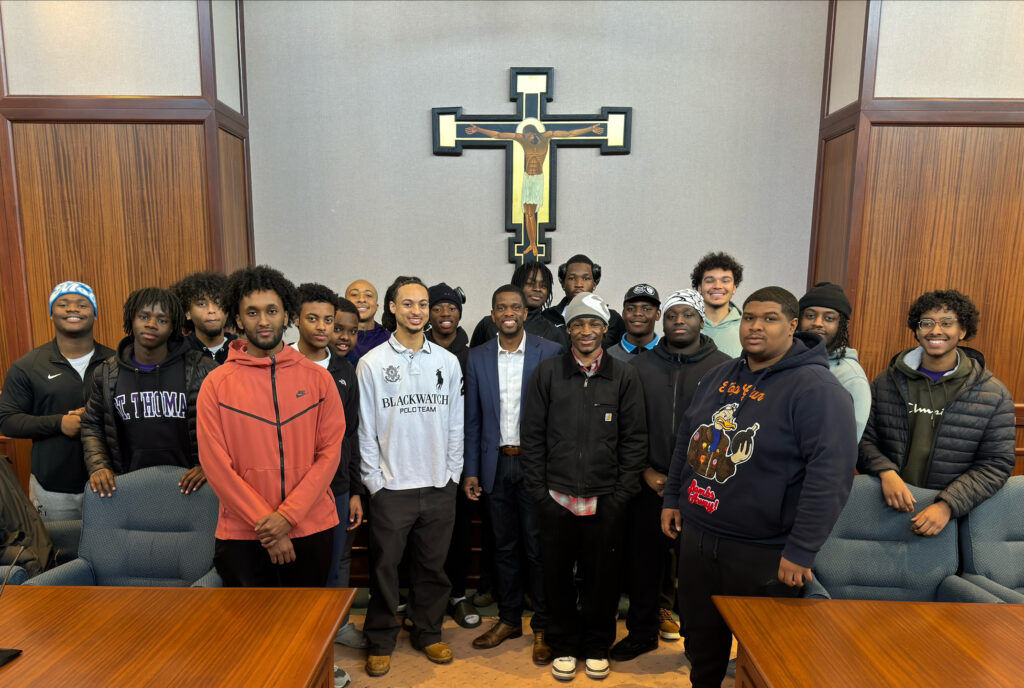
Dr. Mark Dienhart

Dr. Susan Huber
St. Thomas will reduce its contribution to employees’ pension funds and will lengthen the eligibility and vesting periods for those funds as part of an effort to balance next year’s budget and control compensation expenses in future years.
The changes, effective July 1, include the following:
- A reduction from 10.4 percent to 9.4 percent in the university’s pension contribution to a benefits-eligible employee’s 403(b) fund.
- A one-year eligibility period for all new benefits-eligible employees hired on or after July 1. They currently wait one year to become eligible for contributions unless they are 40 or older, in which case they are eligible immediately.
- A three-year vesting period for all benefits-eligible employees hired on or after July 1. This means that individuals who leave St. Thomas before completing three years of continuous service will forfeit any university plan contributions that have accrued. Employees will not forfeit funds they contribute to their voluntary retirement plan. St. Thomas does not have a vesting period at this time.
The pension plan changes are among several steps to reduce operating expenses while holding 2010-2011 undergraduate tuition and fee increases to 3.5 percent and increasing the salary pool by 2 percent for faculty and staff.
The effort to moderate tuition increases can be successful only if we reduce compensation expenses, which are the largest proportion of our budget. With the impact of the recession, we want to put more money directly into people’s pockets, instead of having little or no salary increase, as we had last fall.
Even with the changes, St. Thomas’ pension contributions and benefits package will continue to be the equal of, or superior to, most Minnesota private colleges as well as Catholic peer institutions around the country.
A survey of Minnesota Private College Council members showed their pension contributions range from 4 to 10 percent, with about half of the institutions requiring mandatory employee matches between 1 and 5 percent. A survey of eight Catholic universities indicated contributions range from 3.5 to 11 percent, with five requiring employee matches.
St. Thomas chose not to require employee matches because of inequity concerns. It generally would be easier for higher-paid employees to contribute to pension funds, and thus earn a university match, than lower-paid employees.
Circumstances vary, but many employees will benefit more from an increase in take-home pay as opposed to continued 10.4 percent contributions to retirement funds. Pay increases build a larger base upon which retirement contributions are made over a longer period of time, and that same base is increased for counting Social Security benefits upon retirement. For employees not at the cap of their voluntary contributions to retirement funds, the additional compensation can be sheltered from taxes, just as the university’s contribution is.
Salary increases, which will cost $2.3 million, will become effective Sept. 1. Faculty and staff will receive a 1.5 percent base increase, with the remaining 0.5 percent distributed as merit increases determined through a performance assessment process this spring and summer.
The Board of Trustees, which appointed a task force last fall to establish operating budget priorities for the next several years, is sensitive about the need for competitive compensation. Trustees are interested in how St. Thomas compensation packages compare to those at benchmark colleges and universities and the impact of the pension plan changes on the competitiveness of those packages.
The trustee task force also will study cost-containment options in areas such as health care benefits in an effort to reduce expenses both to the university and its employees.






